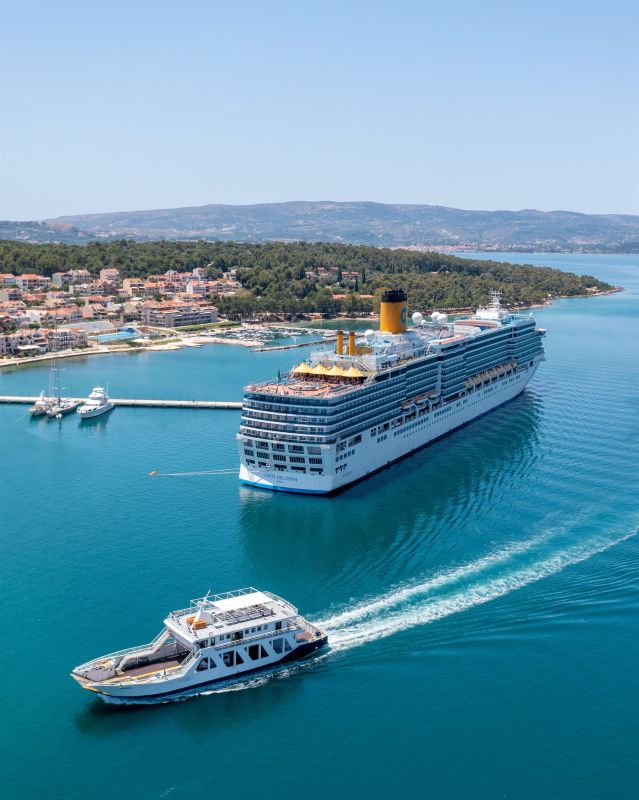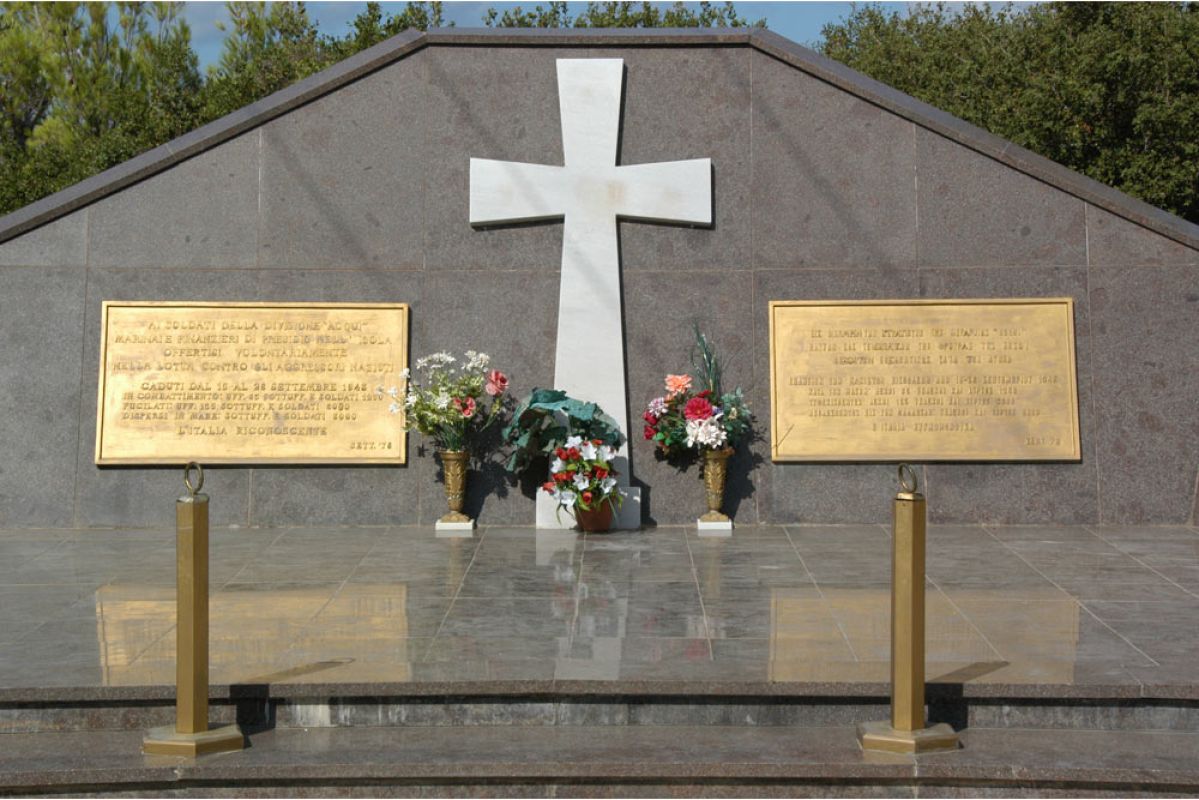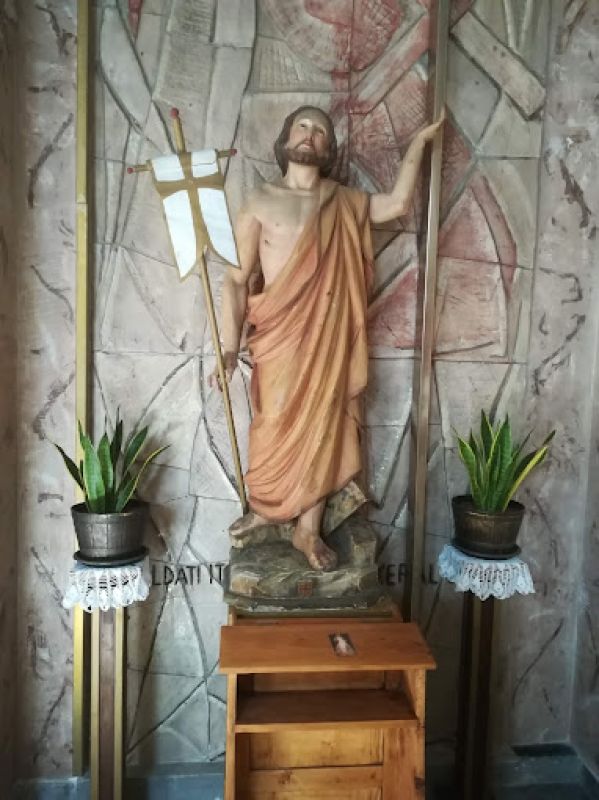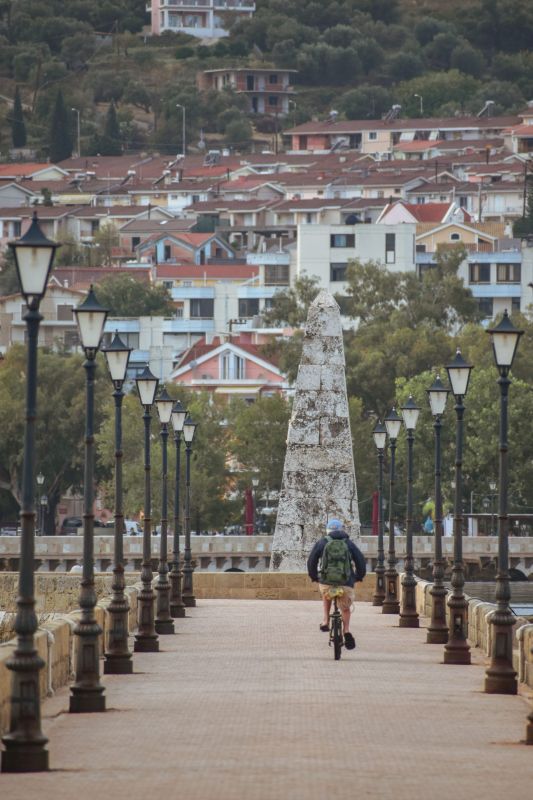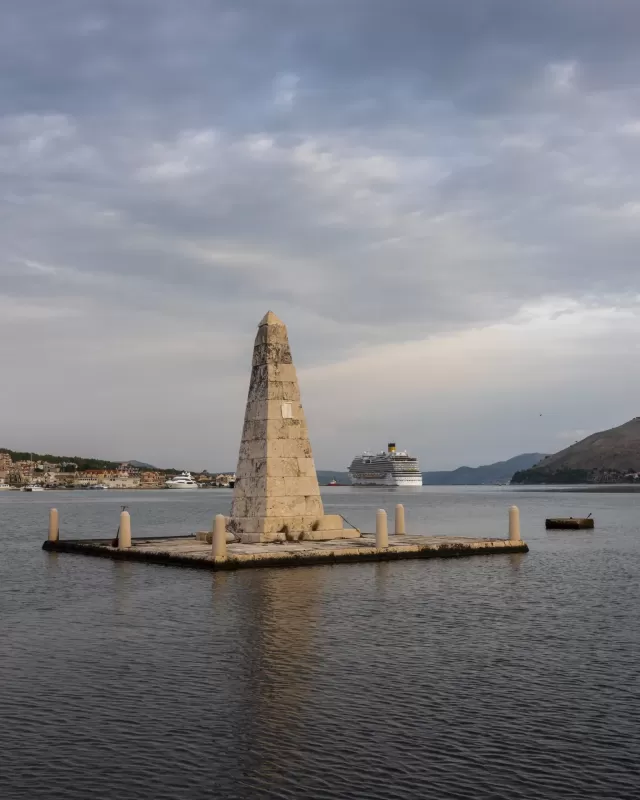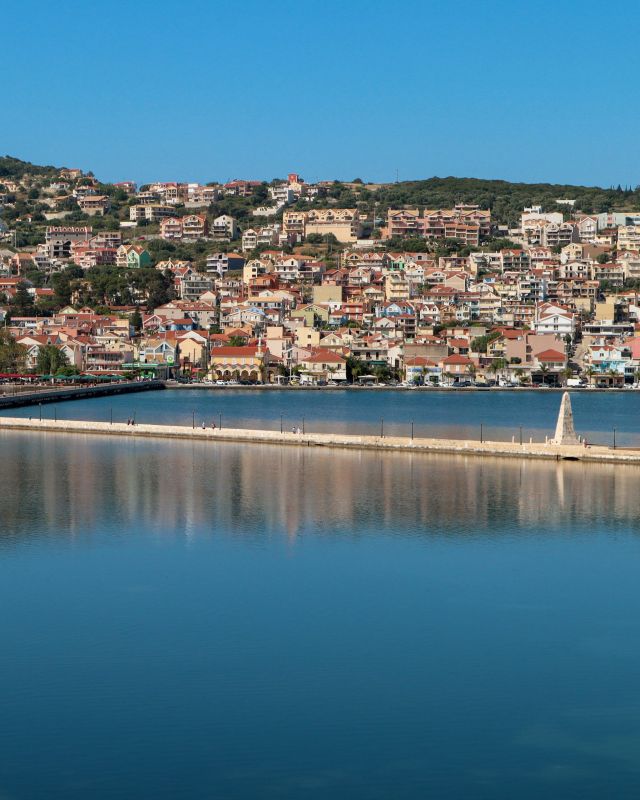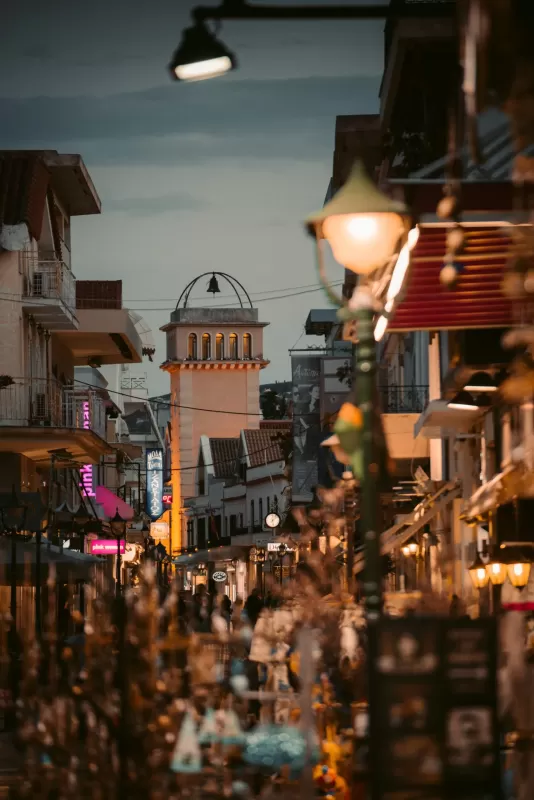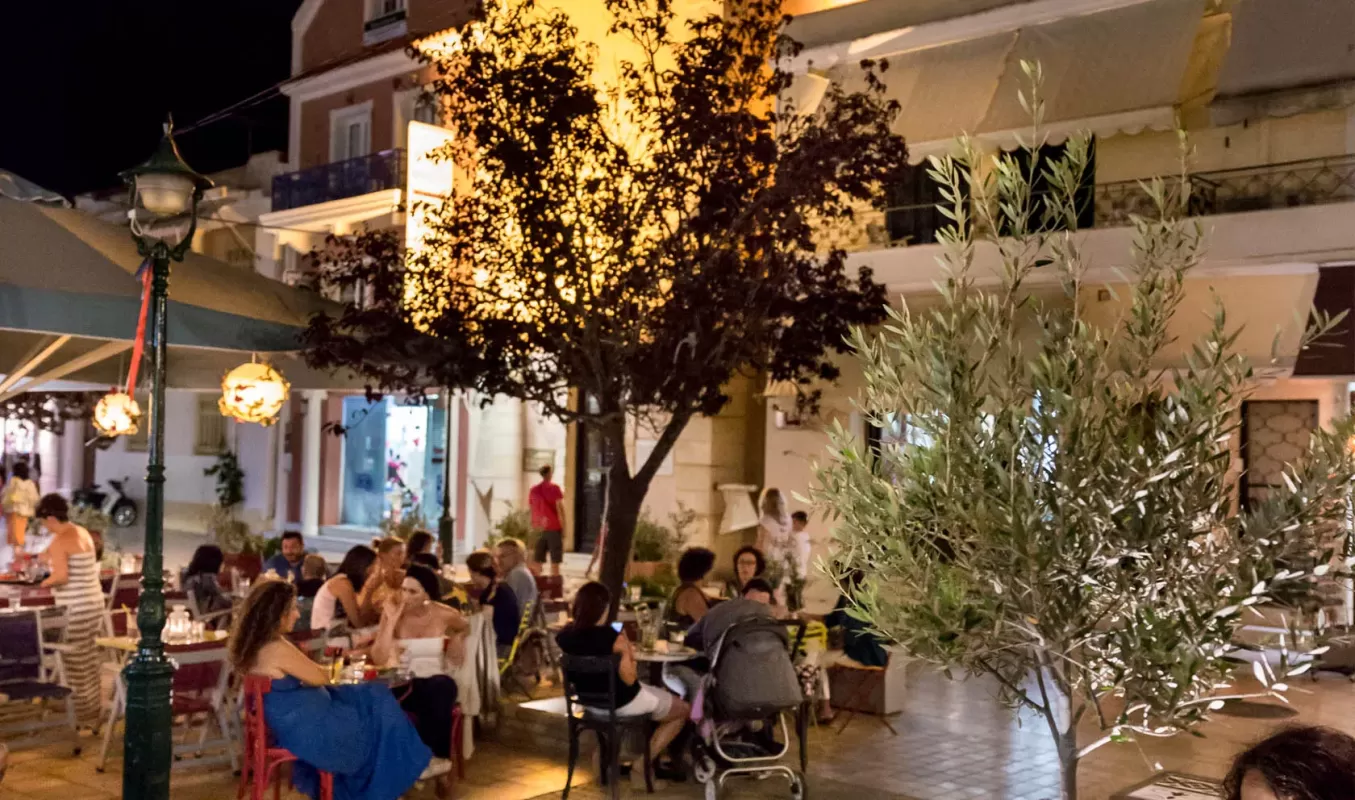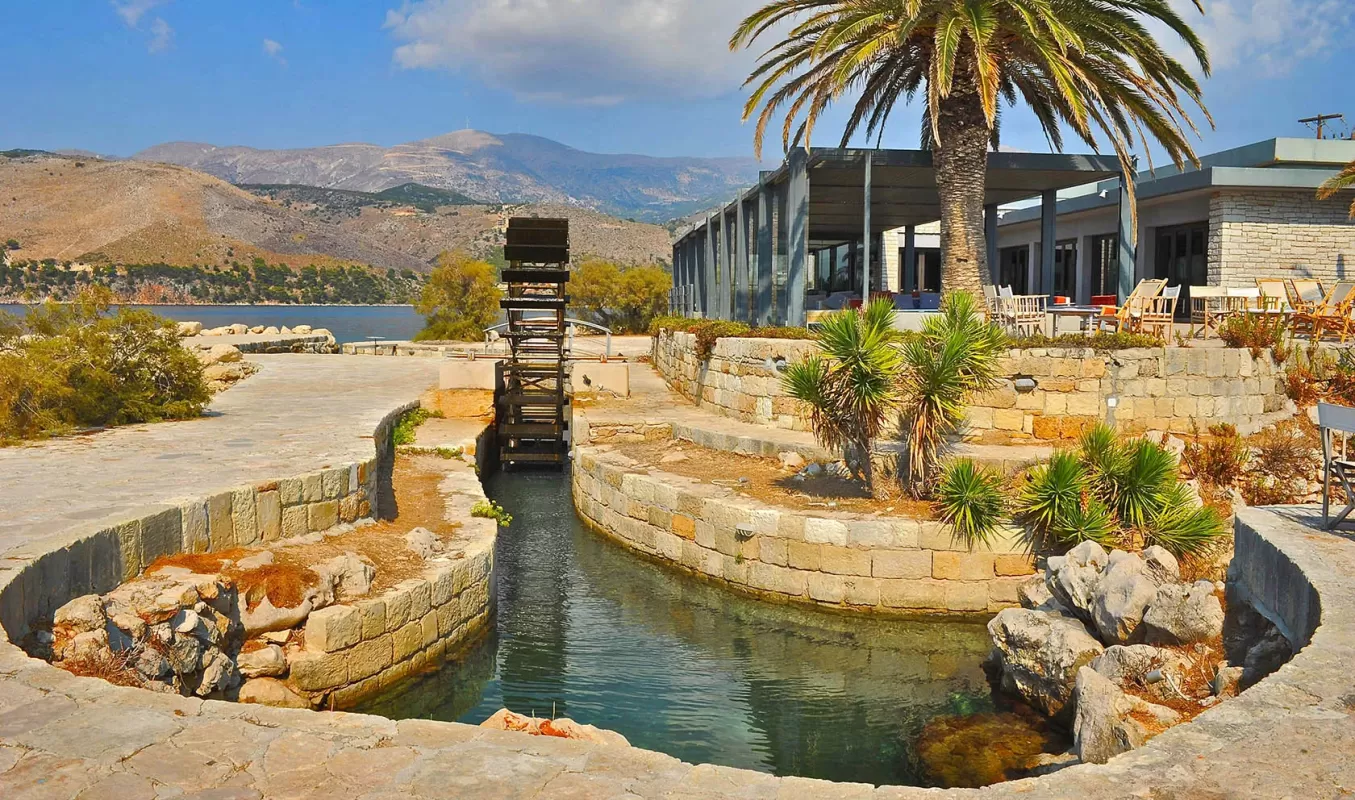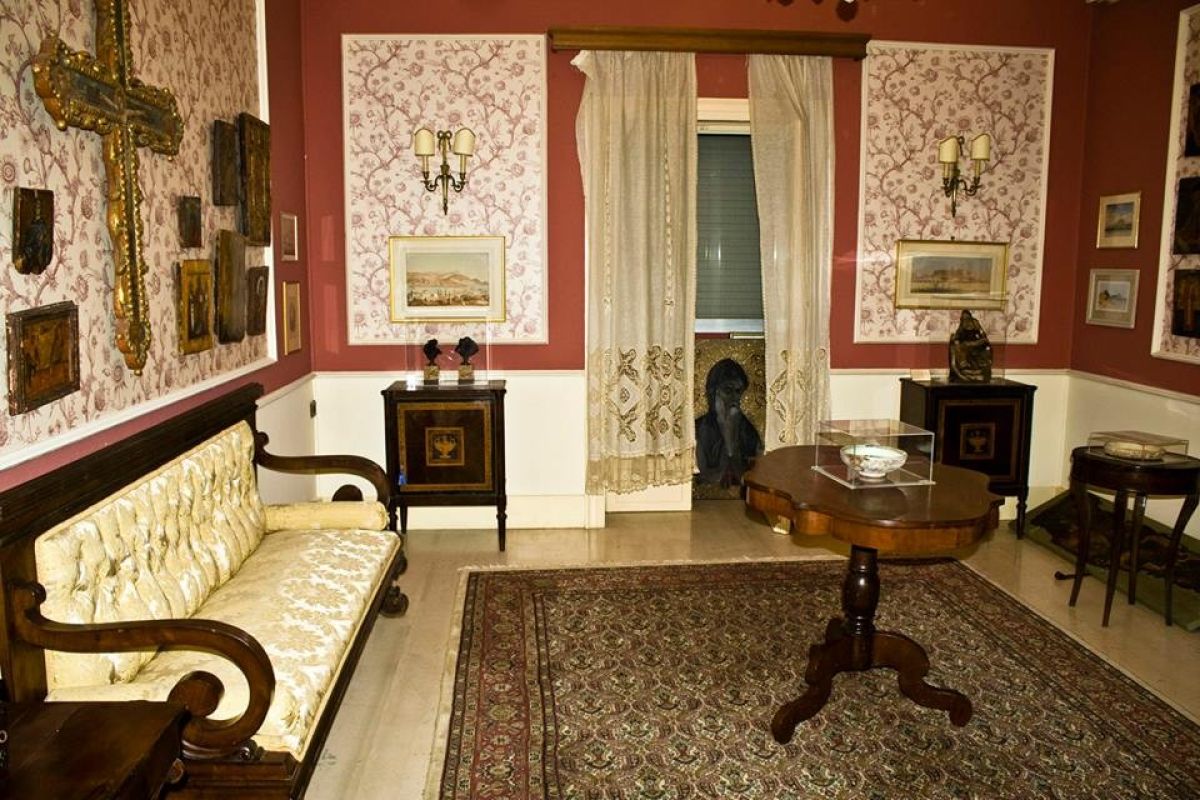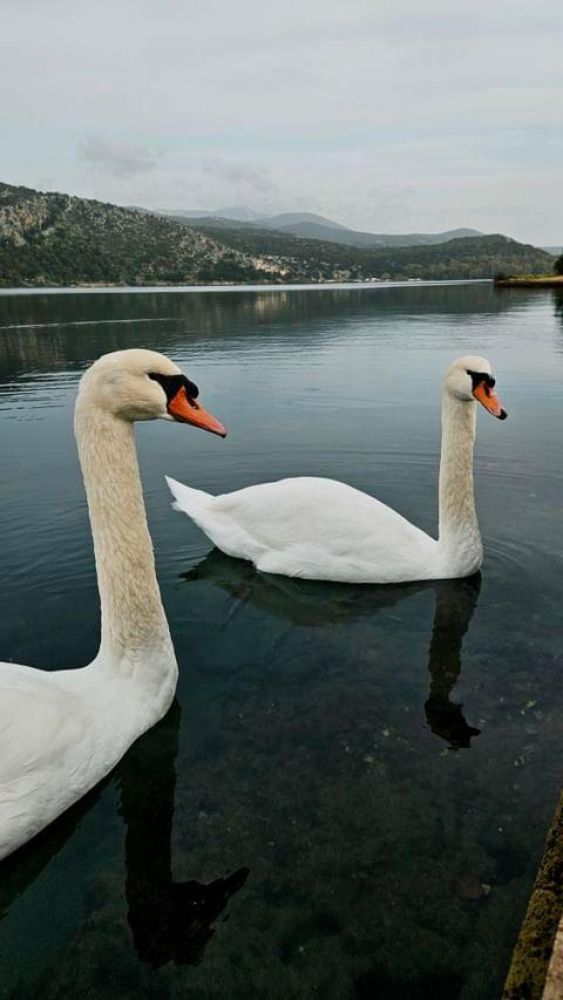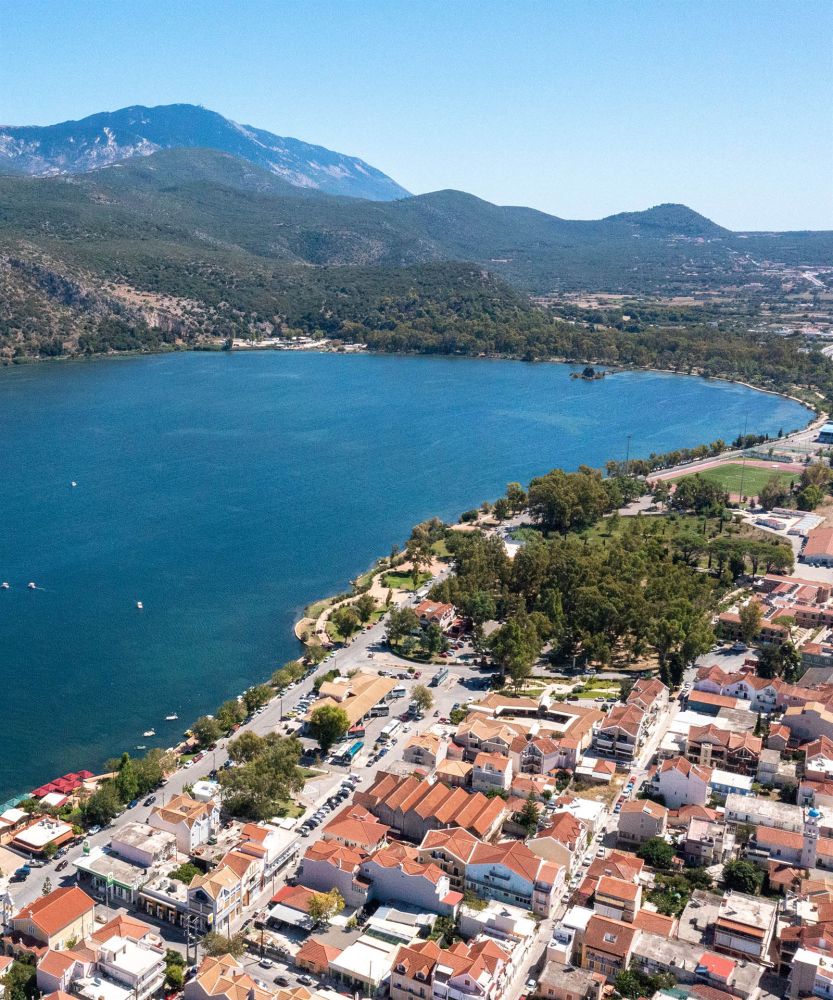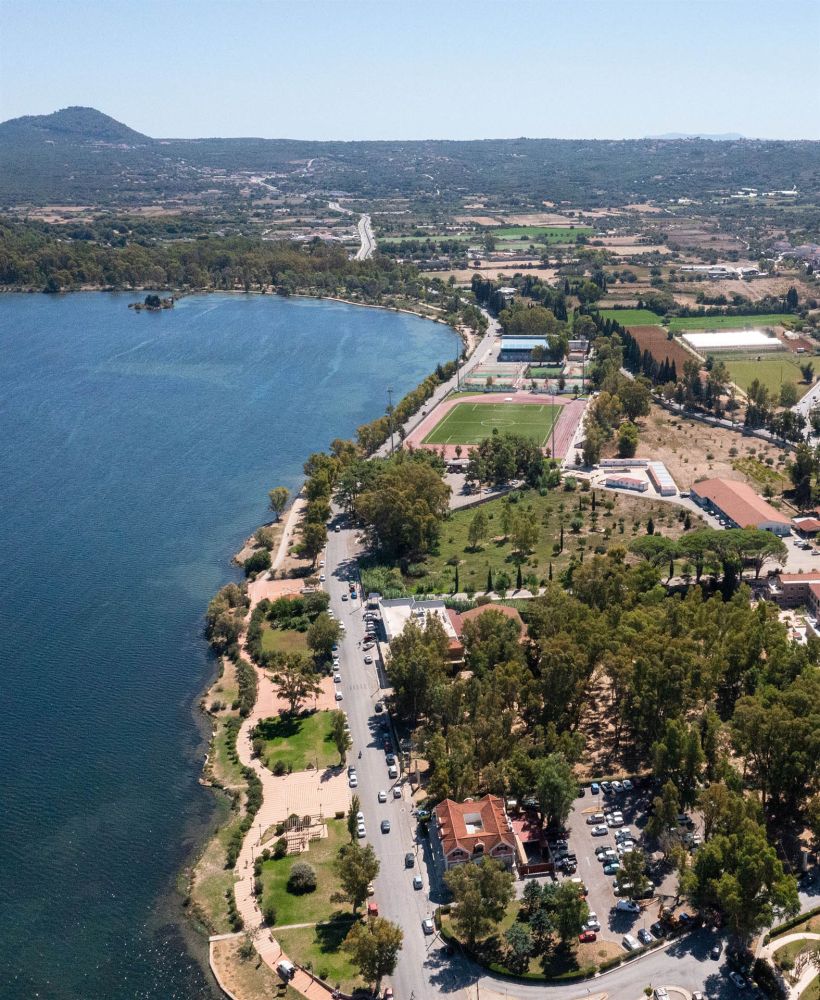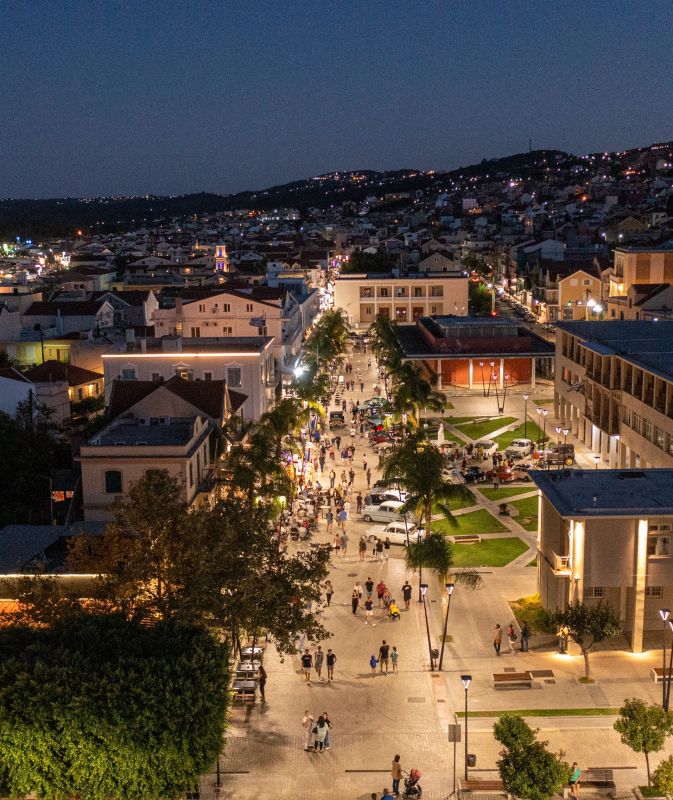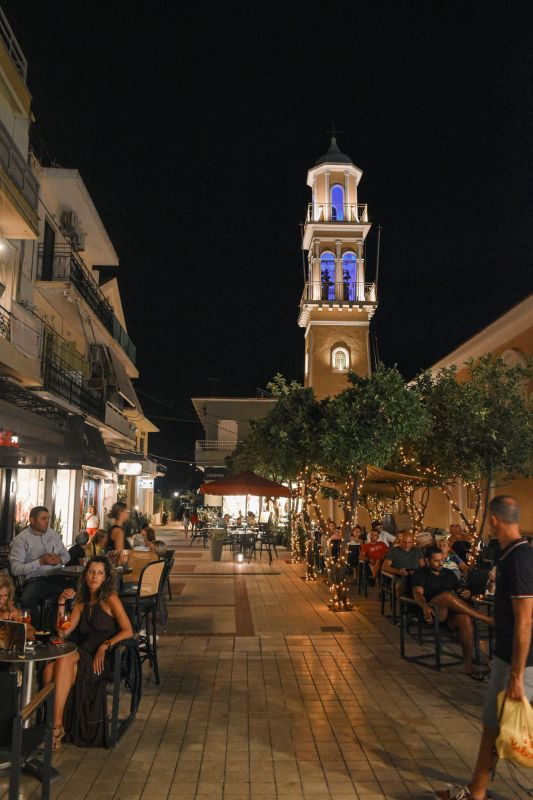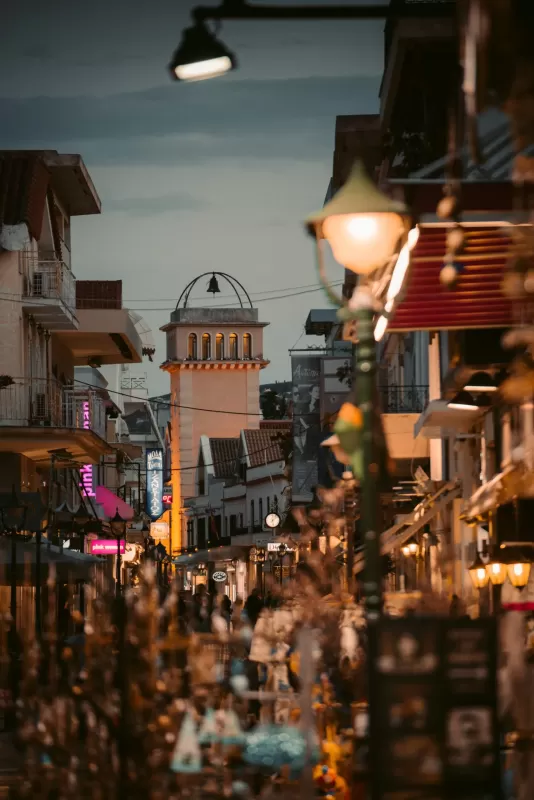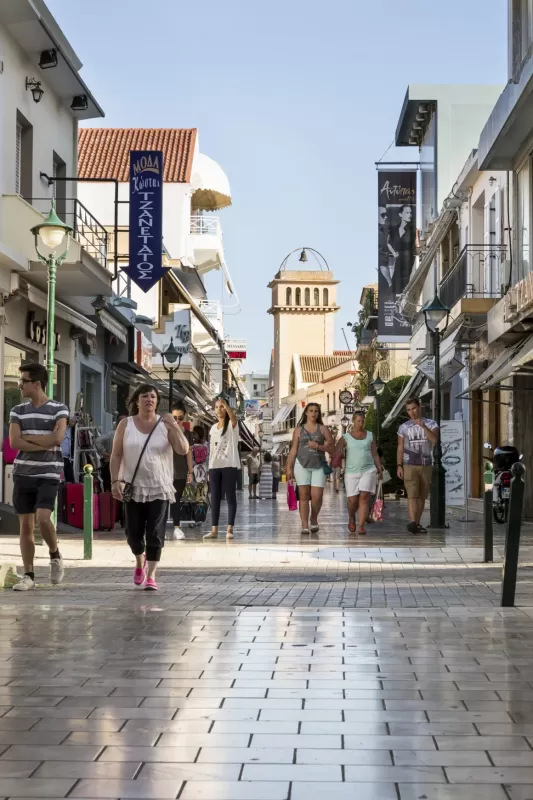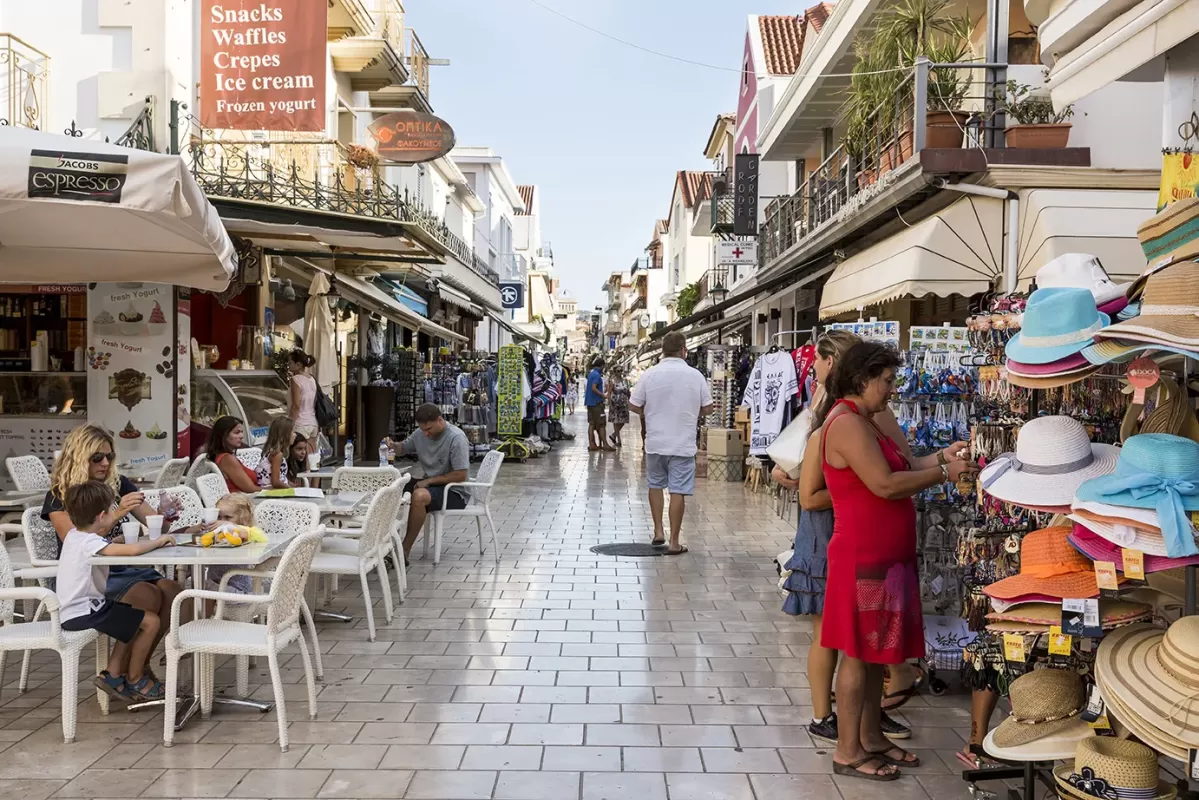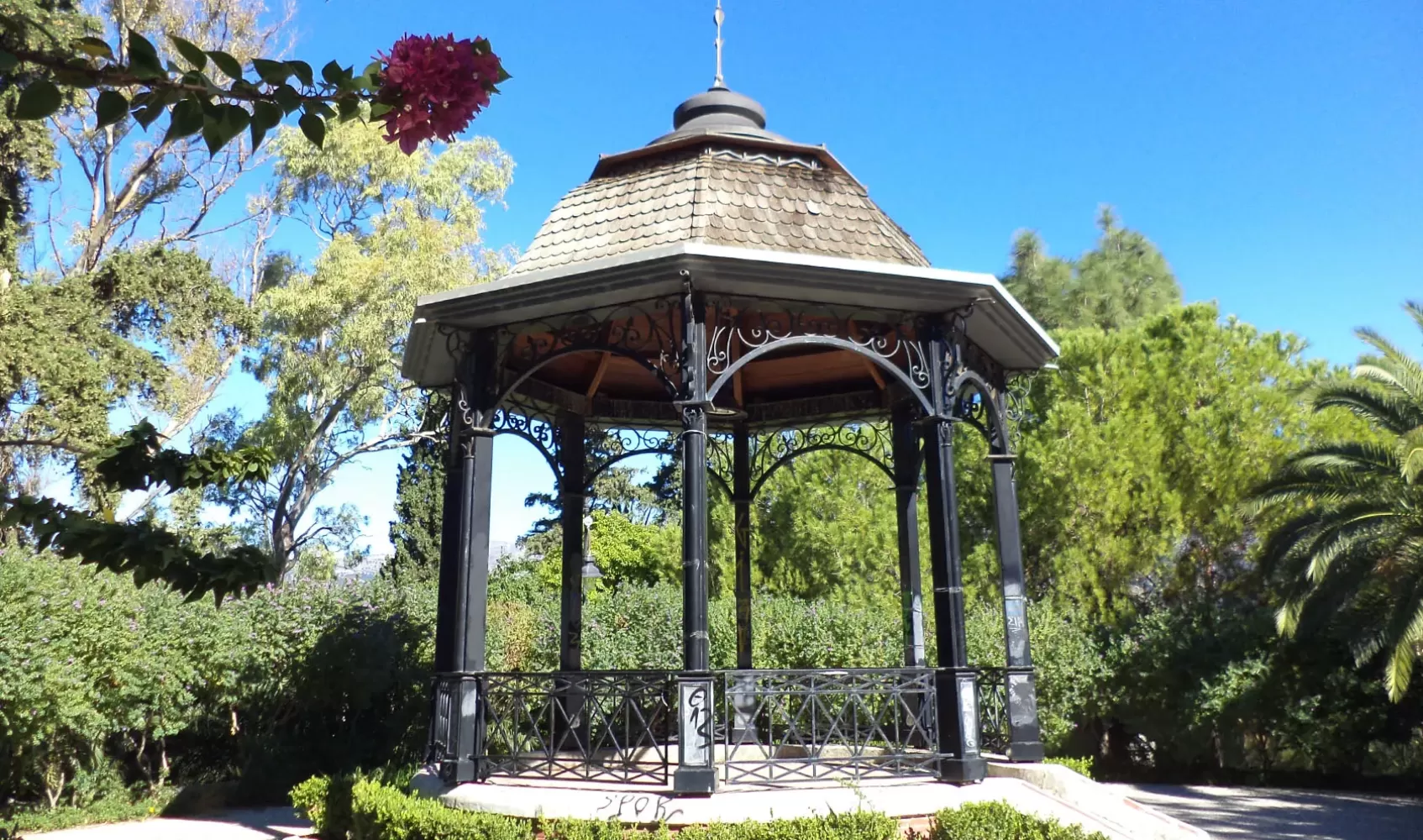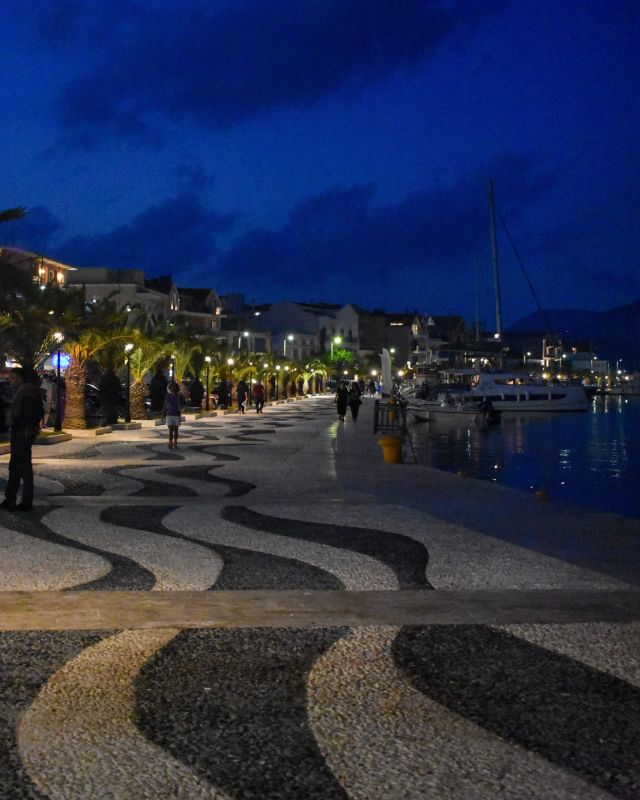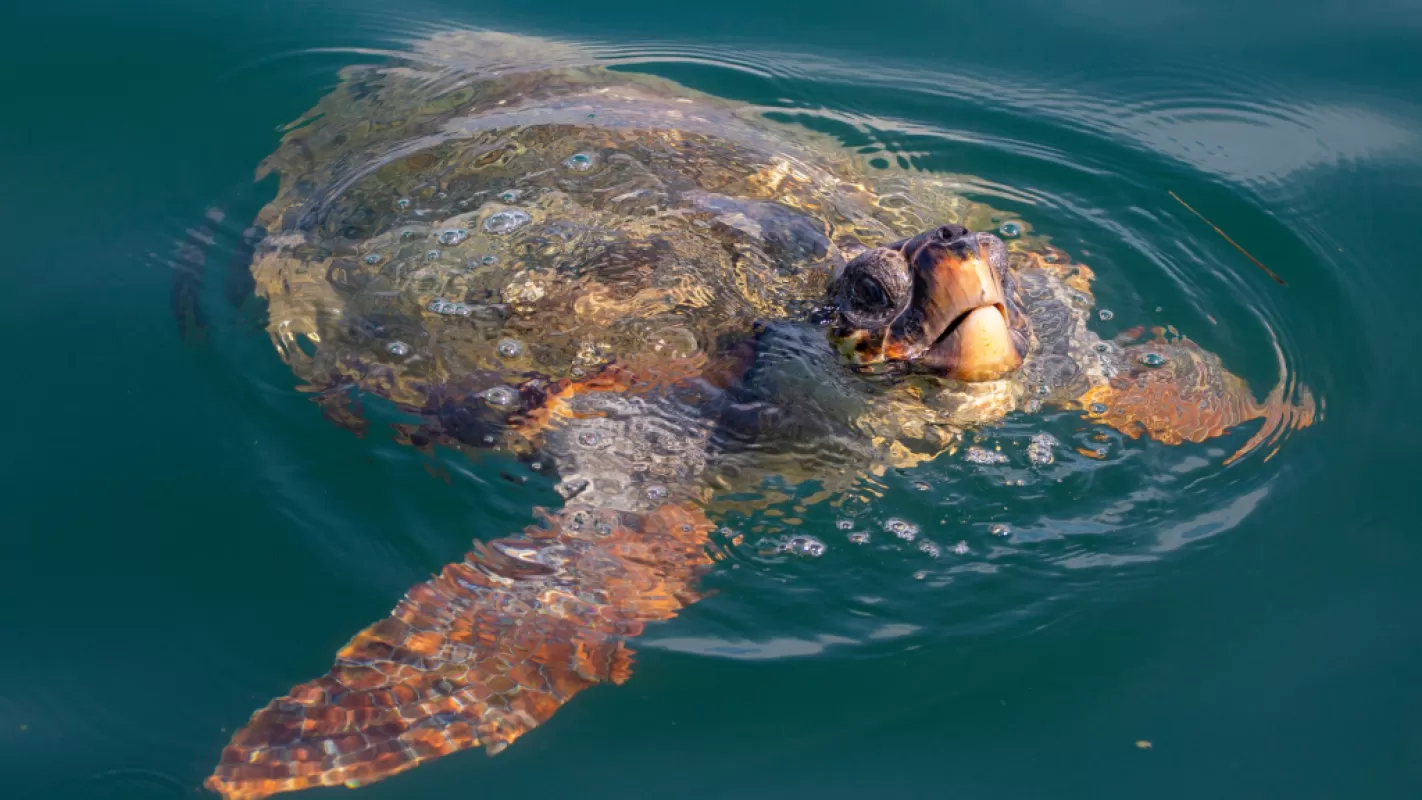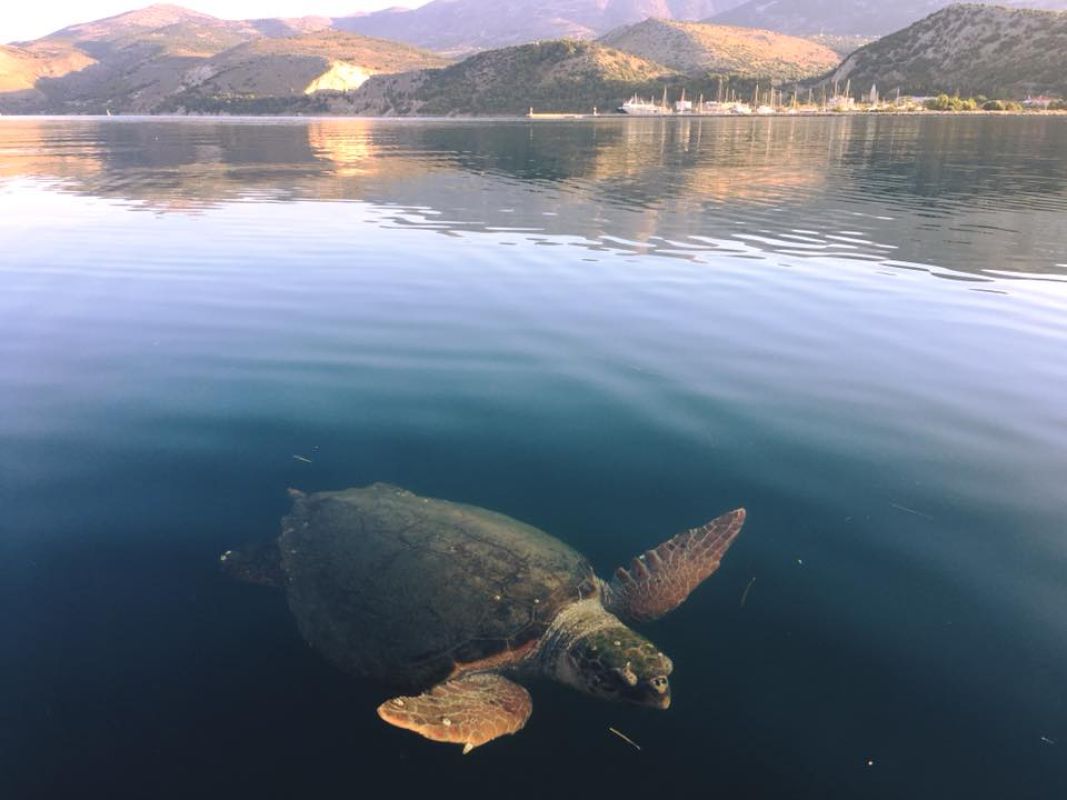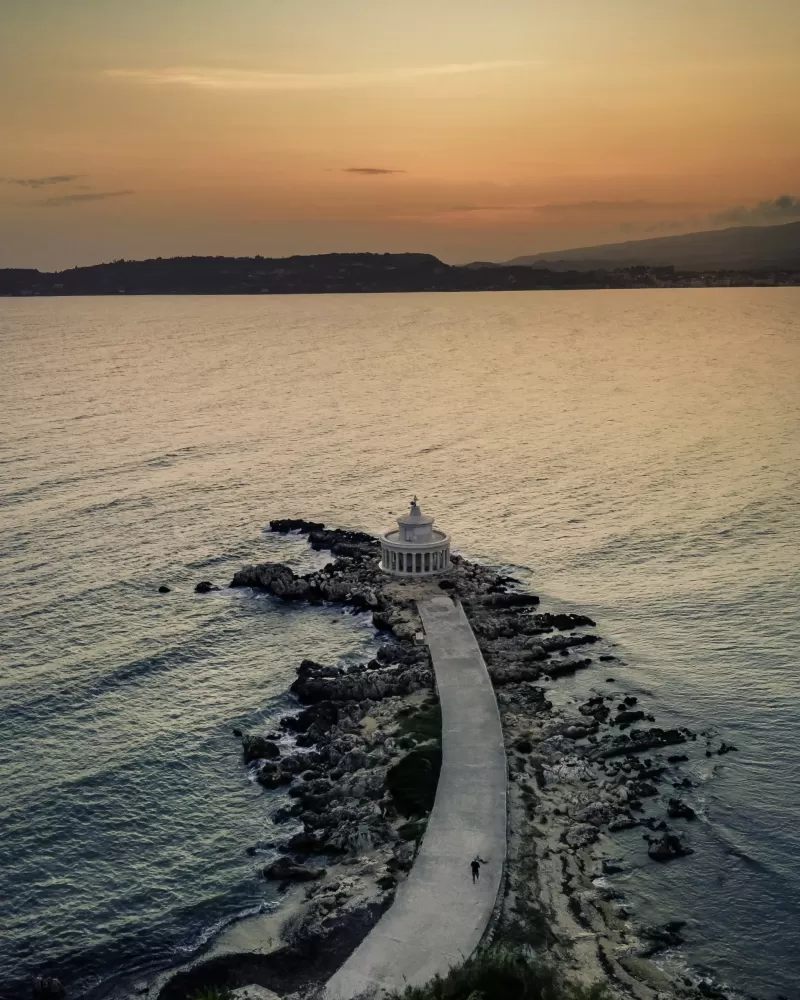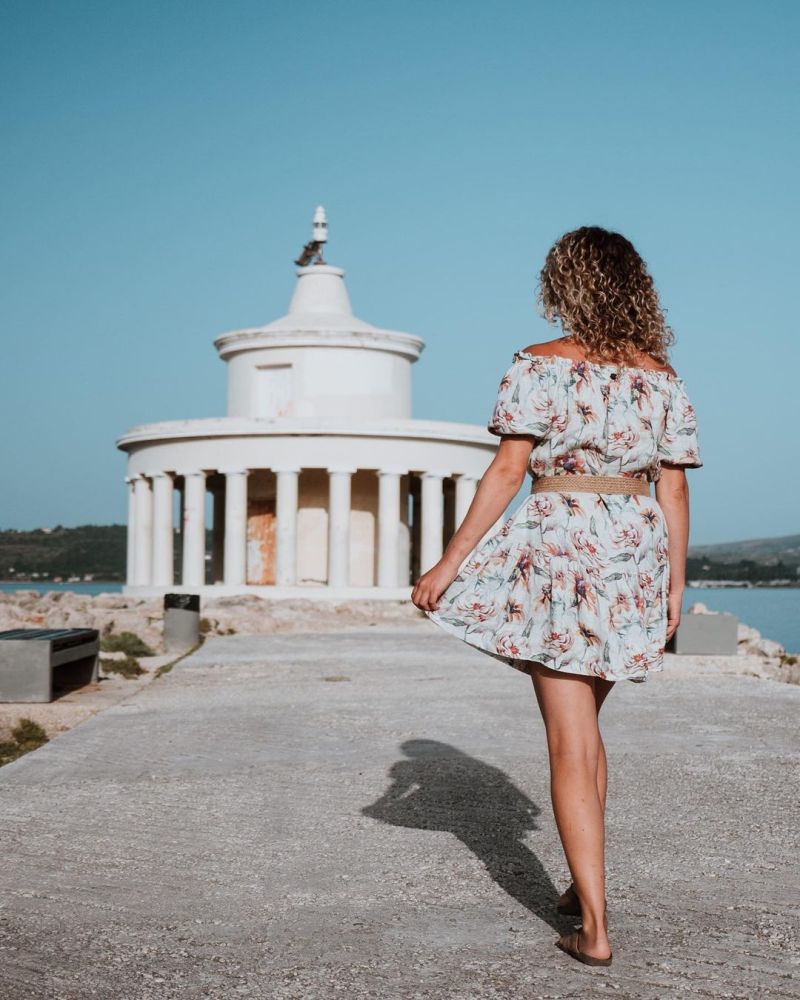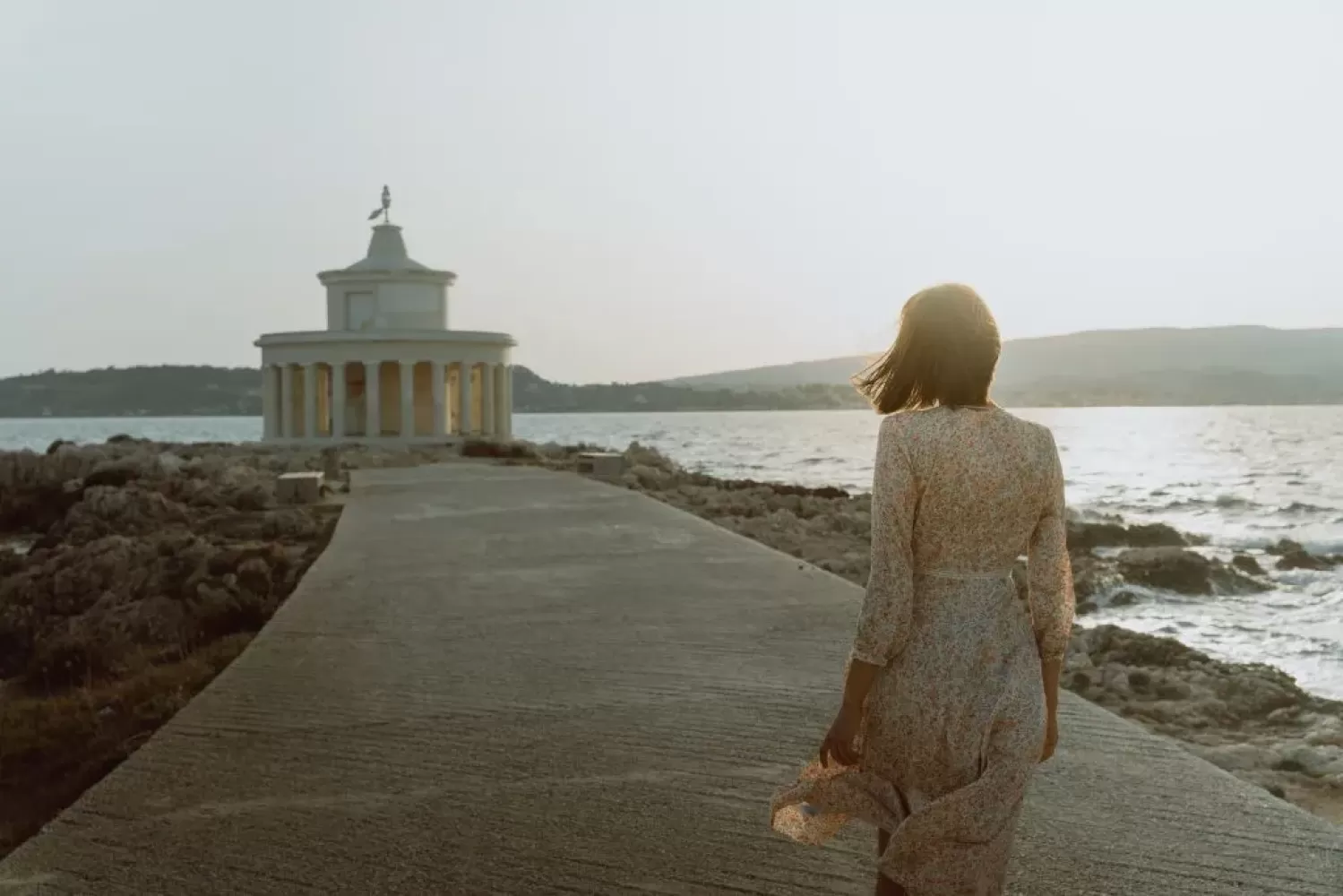The Location
Welcome to the vibrant neighborhood surrounding Chelmis Sea Front Apartments, centrally located in the heart of Argostoli on the bustling Antonis Tritsis Avenue. They are situated on the first floor of an elegant two-floor private building. Positioned in a prime spot, the ground floor of the building’s front side hosts Varkaki Restaurant, renowned for its exquisite seafood offerings. Meanwhile, at the rear, the same establishment extends its culinary delights with a separate section featuring grilled and roasted meat specialties.
Our apartments offer more than just a stay; they provide an immersive experience in the lively atmosphere of this charming town. Situated just one block away from the lively central square, our location is a haven for exploration. The area is not only super-safe but also abuzz with energy. Bars, trendy cafes, restaurants offering local and themed cuisines, supermarkets, and convenient and souvenir shops are all within arm’s reach, creating a dynamic and lively atmosphere for our guests.
Your stay in this centrally located haven is not just about accommodation; it’s an invitation to become part of the pulse of the town. As you explore the vibrant Antonis Tritsis Avenue, every corner tells a story of Kefalonia’s charm, making your experience truly unforgettable.
Now, let’s dive into the must-see landmarks of Argostoli. Here are some recommendations to enrich your journey:
Points of interest
Argostoli – Lixouri Ferry Line
For an extra island adventure, take a leisurely 3-minute stroll to the Lixouri ferry boat dock. This convenience enhances the excitement of your Kefalonia experience, allowing you to embark on a scenic 25-minute ferry boat trip to Lixouri town. The ferry dock is a mere 3-minute walk away from the apartments, providing a seamless connection to this charming town across the sea.
Acqui Division Memorial
As the Italian guard of Kefalonia, the Acqui Division had been in place since May 1943 during World War II. A monument, found near Fanari, is dedicated to the troops who perished in battle, were executed, or died in transfer to detention centers.
Following the Italian truce in September 1943, the Germans executed a large number of soldiers from the Italian 33rd Acqui Infantry Division in the Kefalonia Massacre, also known as the Massacre of the Acqui Division. In total, some 5000 troops were executed while others were killed by drowning or other means.
Captain Corelli’s Mandolin, a novel based on the events of the massacre, was adapted into a Hollywood film shot entirely on the Greek island of Kefalonia.
Atrocities committed by Wehrmacht forces during World War II were some of the most heinous in history. Acqui Division Memorial was erected by the Italian government in 1978.
Catholic Church
Saint Nicholas Catholic Church in Kefalonia: The Catholic Church of Saint Nicholas can be found on the extension of the central alleyway of Argostoli Town, Lithostroto Street. It is dedicated to Saint Nicholas, the patron saint of sailors and the Navy.
This church, boasting a fantastic Byzantine-style design, has a large yellow bell tower and a light-blue peak, though it is mostly remembered for its gorgeous entrance. It houses a variety of small-sized statues, as well as one of the most well-known miraculous icons of Kefalonia, the icon of the Virgin Mary of Preveza.
Significant earthquakes caused the church to deteriorate and be in need of renovation. However, after the seismic 1953 earthquake, the Catholic Church of Saint Nicholas suffered catastrophic damages, causing it to be completely torn apart and rebuilt.
De Bosset Bridge
The bridge, known as De Bosset, was designed and built by Charles Philip De Bosset in 1812. After the 1953 earthquake, the bridge has been restored and is now a great place for public events during the summer. The De Bosset Bridge is the largest stone bridge in seawater and has existed since 1813, when the Swiss engineer Charles Philippe De Bosset worked for the British Army Thanks to his contribution to the design and construction of the bridge, Monsieur de Bossett was appointed governor of Cephalonia from 1810-1814 by the British who ruled the Ionian Islands from 1809-1864. The city of Argostoli, with the narrow Fanari Peninsula protruding from Argostoli, was the central center for all commercial and commercial activities for the inhabitants of the island. However, the entrance was separated from Argostoli by mainland Cephalonia, making the route around the 5km perimeter mandatory. part of it, building a wooden bridge on the south side of the port of Argostoli in Drapano, a small village 950 meters above the water. The transportation problems of the villagers who had been resolved, reduced their fears for possible intrusions and the De-Bosset bridge was completed in two weeks. The small strength of the bridge required its remodeling in 1842. Baron Everton gave the bridge a new look and was rebuilt with stone using materials from Metela Hill. As you cross the bridge upon arrival in its capital of the island, a four-sided symmetrical obelisk consisting of carved rocks rises from the sea. This monument, called the “Column”, which has existed since 1813, was the symbol of gratitude of the Parliament of Cephalonia in Great Britain. The catastrophic earthquake of 1953 injured one third of the bridge on the Argostoli side. The bridge and the obelisk survived the quake, but like the rest of the city, it needed major repairs using modern concrete methods. Several arches were added to the side of the Argostoli bridge to add extra strength to the bridge. Today the De Bosset Bridge was gradually repaired to become the center of Argostoli’s cultural events in the future.
Kambana Square
Walking along the shops on the main shopping street of Argostoli, Lithostroto, you will reach Kampana square. It is obvious that the name of the square comes from the bell tower with the clock that adorns this square.
Today it is a nice atmospheric square with cafes and shops, but back in 1797 this historic and first square of the city was the main stage of one of the important historical events in the turbulent history of the island. Here the French troops that entered Kefalonia, burned the Libro d’Oro (the “Golden Book” was the official list of nobles in the Republic of Venice to which the Ionian Islands belonged until then).
As a result of French Revolution, in 1797 the Venetian rule in the Ionian Islands ended, when they were occupied by the democratic French forces. In general, this change was welcomed with great joy, because it caused the end of the privileges of the aristocracy and the advent of equality for all citizens.
Katavothres
You will be amazed by the sinkholes (katavothres) of Argostoli, which are a unique geological phenomenon that you can see on the north coast of the city. cracks in the land to be lost deep in the limestone rocks of the earth. Remains of this color appeared in the area of Sami.
Thus it was discovered that after a two-week underground voyage these waters flow into the east coast of Kefalonia near Sami, the springs of Karavomylos and the lake cave of Melissani. During this journey, the water mixes with the rain water that is present in the cracks of the subsoil and thus becomes brackish. 19 0 century a mill operated here.
A walk along the coast from the center of Argostoli to the sinks takes about half an hour and is very pleasant. On the way you will find small beaches for a cool dip in the sea.
Korgialenios Museum & Library
The Korgialenios Library in Argostoli, founded in 1924 by Marinos Korgialenios, boasts around 60,000 volumes, making it one of Greece’s largest. With books from the 19th century and earlier, including the 1499 edition of the Souda dictionary, the library houses manuscripts, such as Byzantine music scripts, and archives from Kefalonian writers. The collection extends to Ionian bibliography, newspapers, and magazines. The main room, doubling as a reading space, features computers for public use and hosts events. The Korgialenio Historical and Folklore Museum resides on the building’s ground floor.
Koutavos Lagoon
The vast lagoon that extends northeast of the city of Argostoli is known as Koutavos or as Argostoli lagoon. The stone De Bosset bridge borders Koutavos lagoon which is quite shallow in depth not exceeding two meters. It is home to various species of birds and fish and the famous Caretta carettas swim in the lagoon during mating season.
It was named after the ancient word “kottavos” which stands for bowl. It is a very shallow bay, only for small boats, which used to be swampy and impassable, full of mosquitoes carrying lots of diseases and infections.
Since the construction of the bridge in 1813, the Koutavos lagoon has improved and is one of the most visited sights in Kefalonia, where tourists can stroll around admiring nature.
Lithostroto street
If you visit Kefalonia, it’s quite impossible not to stroll through Lithostroto street. It’s Argostoli’s most vibrant road filled with life and people all year round.
It’s a charming pedestrian street, a picturesque setting for your morning and evening walks. Starting from Kampana square, Lithostroto almost reaches Vallianou square in a parade of shops, cafés and restaurants for every taste.
Famous Saint Spyridon church is located along the shopping street.
The heart of Kefalonia beats at Lithostroto where a lot of traditional customs take place every year such as serenades, religious events and local traditions.
Napier’s Garden
Just a brief five-minute stroll from Vallianou Square, Napier Garden emerges as a sanctuary in the heart of Argostoli. Dedicated to Charles James Napier, the former governor of Kefalonia during the British rule from 1822 to 1830 and a fervent supporter of the Greek people, the garden stands as a testament to his legacy. Originally conceived and constructed by Napier for the amusement of his children, the park now invites visitors to unwind and rejuvenate.
For those seeking a tranquil escape, Napier Garden beckons with its cobblestone paths and an enchanting pavilion. The site also hosts a memorial, crafted by Kefalonian artist G. Bonanos, paying tribute to the war victims from 1912-1922, adding historical depth to the garden’s serene ambiance.
Port of Argostoli
Saint Theodori Lighthouse
Just a few kilometers from Argostoli, you can find one of the most famous trademarks of Kefalonia, the lighthouse of Saint Theodore. Situated on a man-made cape, Saint Theodore’s Lighthouse is the ultimate spot for romantic moments and breathtaking photographs.
It’s a white, 8 meter tall lighthouse inspired by the Doric architectural style, which was originally built during the time Charles Napier was governor of Kefalonia. Completely destroyed by the earthquake, it was reconstructed by the architect Takis Pavlatos in 1964 maintaining its original architectural character.
Also known as “Fanari” (the greek word for lantern), Saint Theodore’s Lighthouse is the perfect spot for watching the sunset, taking romantic pictures or just enjoying the view of Lixouri. It’s definitely worth a visit.
Vallianou square
While strolling through Argostoli, don’t miss Vallianou Square, the perfect place to enjoy a coffee, a refreshing beverage or a meal. Every evening the square becomes a meeting point for locals and tourists and also brimming with children playing in a completely safe environment as the square is entirely for pedestrians. The square was named after the Kefalonian and national benefactor, Panagis Vallianos, whose statue you will see on the square.
Throughout the summer, a variety of cultural activities, dance events and music concerts liven up the square in the evenings. Important part of the Kefalonian music culture are the Kefalonian kantades, traditional songs played with guitar and mandolin, an event you will definitely experience regularly every summer.

